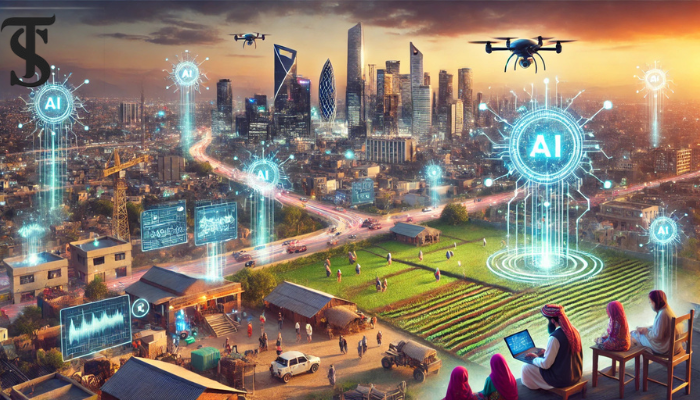How AI Could Shape the Rise and Fall of Nations
In an era defined by rapid technological progress, artificial intelligence (AI) stands to redefine the geopolitical landscape. How nations harness or regulate AI could determine their influence and stability in the global arena. The question is not simply whether AI poses an existential threat to humanity, but how it will influence the geopolitical power balance. From unregulated AI development by private companies to stringent government control, policymakers face critical decisions to mitigate risks and maximize AI’s benefits.
Since 2023, following the public release of advanced AI technologies, concerns around job displacement, inequality, and existential risks have dominated public policy discussions. Yet, less attention has been paid to how AI could reshape global power dynamics. In this era of “geotechnopolitics,” AI may become a significant actor in world affairs, challenging our notions of state power and human agency. A nation’s influence may increasingly rely on its ability to develop, regulate, and integrate AI into its economy and defense infrastructure.
To understand potential futures, researchers have outlined several scenarios for AI development, each carrying different implications for international power structures.
One plausible outcome is that the United States continues its tradition of minimal regulation, allowing private corporations to dominate AI development. Silicon Valley’s free-market approach has yielded swift technological advancements in the past, and such an approach might lead to rapid AI innovation. But this trajectory carries risks: corporations primarily focused on profit may prioritize data collection and profit over national security or ethical concerns. Disinformation, data privacy, and other societal issues may become harder to regulate, and the U.S. government could find itself increasingly reliant on tech giants to navigate global AI dynamics. While this model might maintain America’s economic edge, it also risks neglecting core democratic values and may even exacerbate national vulnerabilities.
Another possible scenario involves the U.S. government taking a more centralized approach, directly controlling AI development. Faced with the potential for AI-driven crises, the government might adopt a model reminiscent of the Apollo Program or the Manhattan Project. In this approach, the U.S. would control data centers, algorithms, and technical talent, directing AI development toward national strategic goals. This pathway might bolster security and mitigate some risks but could also lead to an AI arms race, further intensifying the competition among global powers. The economic disparities between AI leaders and other nations could deepen, exacerbating global divides and creating a distinct class of AI “haves” and “have-nots.”
Alternatively, China might pull ahead, surprising the world with an AI breakthrough. Leveraging its massive data reserves and significant government funding, Chinese tech firms and institutions could surpass their Western counterparts, potentially setting a new standard for AI applications. Such a breakthrough could raise concerns among democratic nations regarding the military implications of AI advancements within an authoritarian framework. China’s success would underscore the value of centralized AI initiatives and might prompt a shift in how Western countries approach AI, spurring similar state-led efforts. If democratic nations fail to adapt to China’s AI achievements, the “AI gap” could widen, with China reshaping the global tech landscape.
In contrast to these competitive trajectories, there is also a collaborative possibility in which global powers join forces to form a public-private consortium. This approach envisions pooling resources from government, industry, and academia, aiming for multilateral agreements on AI standards and safety protocols. While this path would likely slow down immediate advancements compared to the unregulated free-market approach, it emphasizes a more stable and equitable form of AI development. Shared standards could mitigate AI risks globally and promote responsible innovation across borders, balancing competitive drive with safety and accountability. Although the collaborative model might face challenges in aligning diverse interests, its long-term benefits could prevent an AI arms race and allow smaller nations to participate in AI development.
Each of these scenarios presents unique challenges and opportunities, but they all underscore the importance of ethical frameworks and regulatory policies. The international community will need to consider AI’s role in security, ethics, and social impact, acknowledging that the development of AI could result in unprecedented power imbalances if left unchecked. As nations invest in their AI capabilities, they must also consider adopting international standards for AI safety and transparency, which could help prevent an AI arms race and ensure AI’s positive impact on humanity.
AI will undoubtedly play a crucial role in shaping global power dynamics. Whether it leads to a highly competitive, monopolized, or collaborative global environment, the decisions nations make now will influence the next era of world politics. To avoid the pitfalls of unfettered AI development, a balanced approach that considers innovation, ethics, and security will be essential. AI is poised to become a defining element of geopolitical influence, and how we manage its integration will determine not only global stability but also the ethical foundations of the modern world.
The author is the founder of The Spine Times. His areas of interest include terrorism, erstwhile FATA, China, and global politics.






